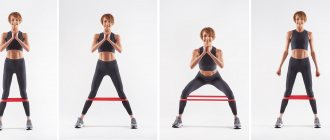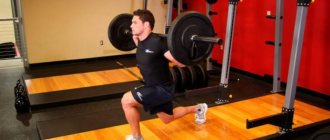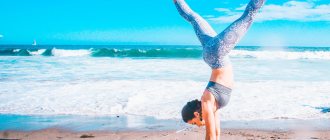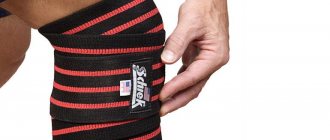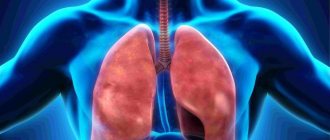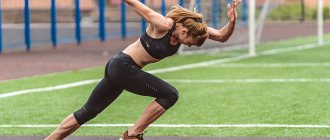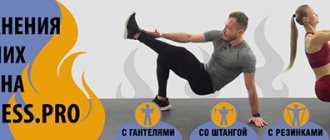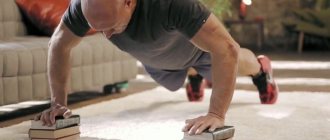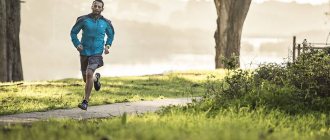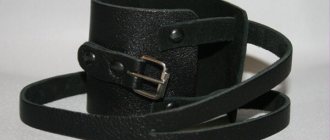The running mask, also known as the hypoxic mask, is still the subject of controversy and disagreement. Some famous athletes: NFL stars, MMA stars and many others, use masks to prepare for competitions, although this is considered more of a publicity stunt. However, some companies issue instructions for their products that recommend a set of low-intensity exercises aimed at static loading for any level of training. And yet, is it worth pursuing? First you need to understand what hypoxia is?
What is it and how does a training mask work?
A hypoxic mask is a patented simulator with a special system for limiting the flow of oxygen into the lungs through valves. Such a simulator forces the respiratory muscles, including the diaphragm, to be loaded when inhaling, thereby improving the functions of the respiratory system.
Why is this necessary? In extreme conditions or at high-level competitions where endurance is required, training with a mask improves the body’s ability to adapt to subsequent loads with a normal supply of oxygen, that is, without a mask. Thus, after such exercises, the lungs work in full, saturating each cell with oxygen many times more. Manufacturers position their product as a training simulator in the mountains. But this is not entirely true, because the air flows through the valve system undischarged.
Important! Hypoxia or oxygen starvation is a decrease in the supply of oxygen to the body - to tissues and organs. With prolonged hypoxia, pathological changes develop, and the central nervous system, liver, kidneys, heart muscle suffer, and even death occurs.
Only with proper hypoxic training in a mask can resistance to extreme situations for the body be achieved against hypoxia caused by high altitude conditions, low atmospheric pressure or poorly ventilated closed spaces.
How does the mask work and what does it consist of?
The breathing mask is secured to the head with special fastening elastic bands, which are fastened with Velcro. The set includes inlet valves with a membrane (6 pieces) and outlet valves (1 piece). In this case, the mask, in its appearance, resembles a respirator (the eyes remain open) or is similar to a gas mask (both the lower and upper parts of the face are covered).
Advice
This sports accessory is quite easy to care for: it can be washed by hand and can also be treated with a special spray.
The training mask works on a simple principle: while training,
the supply of oxygen will be limited by closing the valves. In this case, the athlete will be able to easily change the degree of oxygen pressure, thereby adjusting the degree of conditional altitude from 1 kilometer to 5.5 kilometers. The mask is adjusted by working with the membrane and valves.
To simulate a height of one kilometer, the membranes are opened and valves with 4 holes are attached to them. To make the height approximately 2 kilometers, you need to take valves with two holes. For 3 kilometers, one hole is taken. To simulate 3.5 kilometers, you need to use valves in four holes and close one of the membranes. To climb to a height of approximately 4.5 km, valves with 2 holes are taken, and one of the membranes is closed. To overcome a 5-kilometer altitude, a valve is taken into one hole, and one membrane remains in the closed position.
Benefits of running with a mask
- Trains the muscles that promote breathing, increasing their tone.
- Improves oxygen saturation of the lungs, increasing their volume.
- Increases the anaerobic threshold - the body's performance at high heart rate. Learn more about heart rate zones →
- Increases the overall endurance of the body.
The mask can be used for running outside or in the gym, and training on cardio equipment.
Important! Please note that only trained, healthy athletes can run while wearing a training mask. Beginners and people suffering from dysfunctions of the cardiorespiratory system are prohibited from training in a hypoxic mask!
What is an oxygen mask
An oxygen or hypoxic mask is a kind of cardio equipment that is widely used by runners and other athletes. Modern models of masks resemble a running respirator in appearance, covering the nose and lower part of the face. Reliable wearing of the mask is ensured thanks to elastic bands secured with Velcro.
According to the manufacturers, the oxygen mask simulates the rarefied air of the highlands. But in fact, the mask does not change the composition of the air. Its design simply makes it difficult for the athlete to breathe during training. As a result, the aerobic threshold increases and the cardiovascular system develops. Deeper slow inhalation and labored exhalation train the lungs. Next, let's look at the benefits of an oxygen mask for sports.
Minuses
- Leads to hypoxia, which can be fatal for many unprepared individuals.
- Increases stress, some people experience panic and nervousness when they feel oxygen deprived.
- The mask makes it difficult to breathe, which causes respiratory discomfort for many.
- In untrained individuals, heart rate may increase significantly.
- The greater the inhalation resistance that the mask creates, simulating high altitude and increasing hypoxia, the lower the hemoglobin level drops.
- Causes adverse reactions and pathologies - fainting, cardiac arrhythmia and brain hypoxia.
Contraindications to the use of an oxygen mask
Beginners should use the mask with caution, since the body is not yet accustomed to even normal exercise. Lack of oxygen when running causes stress, which can cause damage to an unprepared body.
The breathing mask for running is recommended for training experienced athletes. If you have been training regularly 3-4 times a week for a year or more, you can use a mask. If your experience is not that long, but you can easily run 10 km without losing your breath, also try increasing the load with a mask.
A breathing training mask is strictly prohibited in the following cases:
- Heart and pulmonary failure
- Hypertension
- Malignant formations
- Chronic respiratory diseases
- Infectious diseases
- Temperature increase
How to properly run with a mask to improve endurance
Even a trained athlete should start their training at a low intensity to test the body's adaptation to unusual loading conditions.
Perform your first workouts at the lowest resistance level, set using the valves. Only then gradually reduce the access of oxygen.
In the first lesson, run 100 meters with rest without a mask, and so on for 5 approaches. With each session, increase the distance by another 100 meters, reducing recovery time. Over time, do your entire workout wearing a mask.
Do not exceed the duration of the lesson, 20 minutes is enough , otherwise there is a risk of exceeding the permissible oxygen deprivation.
How to warm up with a mask
How to properly warm up with an oxygen mask:
- After you put on the mask you need to set the resistance level. For beginners, it is best to set the resistance to the lowest;
- then, in the first minute, you need to deeply inhale air through your nose and exhale it through your mouth;
- after this, maintaining even breathing, you need to walk for about 3 minutes ;
- Now you can gradually increase the speed, jump, and wave your arms. You need to do this for two minutes, keeping your heart rate at the same pace;
- work intensively with your arms in the starting position - spread your legs shoulder-width apart, at the same time you need to start swinging your arms on each leg for 30 seconds;
- to complete the warm-up, slowly perform side lunges, while keeping your heels on the floor and making sure your back remains straight for one minute;
- The purpose of the warm-up is to achieve a comfortable feeling, after which you can proceed directly to the training itself.
How to choose a breathing mask for running
- First of all, choose the appropriate size so that the mask fits tightly to your face. Each manufacturer should have a scale on which you can choose the right size based on your own weight category.
- Choose masks with multi-level modes , in which you can select the resistance individually.
- Choose the highest range of air restriction , simulating low altitude - from 900 meters and over 5000 for more advanced athletes.
- The mask must be sealed , made of high-quality materials, easy to clean and disassemble, and have reliable fastenings.
Benefits and harms
The benefits and harms of a hypoxic mask are vigorously debated. There is still no serious and clear scientific evidence that the lack of oxygen during a race brings benefits that outweigh the potential damage to the body.
Of course, the advantage of exercising in a mask is better training of the human lungs and heart. With a lack of oxygen, the lungs work more actively, pumping air, which contributes to an increase in their volume. The heart muscle also becomes stronger, and the cardiac cycle normalizes.
All this leads to an increase in the anaerobic threshold. The body does not perceive an increase in heart rate as stress; it learns to work with increased heart rate characteristics without increasing the load on organs and systems. In addition, due to an increase in the depth of breathing, the diaphragm stretches, which leads to muscle and body growth in the chest area, and broadening of the shoulders. For men, this feature is one of the skills to obtain an attractive figure.
As a result, running with a mask significantly increases the body's resistance. This, in turn, allows you to improve athletic performance in all types of cardio and strength training.
Despite the many advantages, there are serious disadvantages to using this type of product. First of all, this is severe hypoxia, which can be fatal for an unprepared athlete or people with disabilities.
With a lack of oxygen, the nervous system is subjected to enormous stress, which can manifest itself in panic attacks while running with a confused consciousness.
Inevitable discomfort during exercise caused by lack of oxygen. The athlete is accompanied by emotions, as if he cannot breathe completely, voluntarily tears off the mask to begin to breathe fully.
Exercising with masks also stimulates a significant increase in heart rate, which is unsafe for the elderly, athletes suffering from shortness of breath, heart disease, hypertension and obese people. Increasing mask resistance (ie, more training and more hypoxia) leads to a decrease in hemoglobin levels. People prone to anemia should stop running with a mask.
With the introduction of a mask, the likelihood of developing pathologies and bad reactions of the body increases: fainting, suffocation, arrhythmia and cerebral hypoxia. Many of these long-term effects may be irreversible.
Due to the existing damage, training in masks is strictly prohibited for people with heart disease, as well as respiratory system disorders, hypertension, tachycardia and arrhythmia. People with poor physical condition should not exercise while wearing a mask.
Top 3 best manufacturers of sports masks for running
Elevation Training Mask 2.0
The original patented mask of the American manufacturer has 6 resistance levels, suitable for training of any difficulty level. Approximate cost 4500 rubles.
Phantom Athletics
The brand produces masks with a complex multi-level valve system, with the ability to control the air supply. There are 3 sizes: up to 70 kg, up to 100 kg and over. Approximate cost from 1900 rubles.
Running Mask by Hvat
The Russian manufacturer did not bypass training masks and created its own products with 6 levels of oxygen supply, making training accessible. Cost from only 990 rubles.
How to choose a respirator
During work related to technological processes, in most cases, not only the hands are used, but also the respiratory organs. To protect your own health, it is recommended to use various means of protection.
If we are talking about the respiratory system, then, first of all, you should take care of a respirator. Today there is a wide range of protective equipment on the market. All models have many differences and purposes. To understand how to choose a respirator, you need to follow all the systematization, follow the usual tips and tricks.
Main classification of respirators
Today, all types of respirators are combined into a systematization. It has 4 main categories, depending on:
- purpose (against gases, dust and universal);
- devices (with or without breathing valve);
- operating time (one-time or multiple-time);
- type of protective device (air, combination and purification).
The first group allows you to perform repair, construction and painting work, in particular, create car paint jobs. If you need to wear a respirator all the time, you should buy a reusable model, in which you can change the filter from time to time (depending on contamination).
In disposable models, the filter is fixed, so once it becomes clogged, the respirator is thrown away.
A very necessary reason that affects the price and ownership of a respirator is the filter system. It can have different efficiencies, which are calculated based on the size and number of particles captured. When purchasing, you should carefully study the model annotation, which contains all the data and parameters.
For dirty areas (production) it is worth using air types. Your device is equipped so that clean air is supplied from a stationary cylinder. Its performance directly depends on the production of chemical reactions.
Filter systems
When choosing a respirator for repair, you must choose a model with a special filtration system. This will not only trap small dust particles, but will also absorb harmful chemicals.
Some designs (for example, RU-60M) include a special box into which various aerosol filtrates can be placed.
This option allows you to choose what type of filtration system you need without any outside help.
It is worth noting that specialists use only special filter parts for any respirator model. This allows you to maintain a higher level of protection and not worry about the safety of your work. Before purchasing a system, it is necessary to calculate the prospects for its implementation in order to save money on various components.
Rules for trying on a respirator
- Visually inspect the respirator for any defects.
- Choose the right size model and try it (without discomfort).
- If you have the ability to adjust, choose the normal position and tension of the bands.
- The nose clip should fit your nose perfectly, but not press against it.
- Take a deep breath and exhale. In this case, it is important to check the tension of the mask on your face.
- If the model leaks, another size is selected.
- The selected respirator is packaged and stored in a special bag or box.
What do training mask manufacturers promise?
Professional athletes and scientists have long been fascinated by the idea of training at high altitudes. This is because under conditions of hypoxia (low oxygen levels), the production of red blood cells (erythrocytes) increases and the blood's ability to carry oxygen increases. The latter, in turn, correlates with an increase in VO2max and endurance.
In fact, this is why many elite athletes train in the mountains before the most important competitions. Manufacturers of training masks believe (or try to make their customers believe) that they have finally managed to create a product thanks to which there is no need to go to the mountains to train in hypoxic conditions.
The essence of how the mask works is simple: Elevation Mask restricts the flow of air into the nose and mouth, and thus tries to simulate the effect of training under hypoxic conditions. The mask has several holes and valves that regulate air flow to simulate different altitudes - from 914 to 5,486 meters. The higher the height is set, the harder it is for a person to breathe.
According to mask sellers, their product can increase VO2max, a key marker for increased aerobic performance and endurance. But are these promises true?
Winter running masks
Masks for training in the cold season deserve special attention. In winter, an athlete’s body is protected by thermal underwear, several layers of sports equipment, hands by gloves, feet by shoes. There is a hat on your head, and you can even close your eyes from the piercing cold wind or snow with special glasses. But there are still exposed parts of the face that will be frostbitten if not protected. This is why you need a special mask for winter running.
Typically, accessories are textile, often consisting of several layers, each of which performs its own functions . The main tasks of such winter equipment are to keep warm, keep out cold and wind, and protect from moisture. There are different types of masks for sports in winter:
- Balaclava. A model that completely covers the head, neck (with a tight fit), forehead, cheeks, and lower part of the face. Only the eye holes are open. Lighter versions have holes for the nose and mouth. The ski balaclava has an additional water-repellent layer.
- Mask. Covers the neck and lower part of the face. May have a hole for the mouth. Provides a tight fit. This type of outdoor fitness protection is made from polyester and spandex, sometimes combined with fleece.
- Buff. This is the name of the transforming mask. It can be worn on the head, covering the hair and forehead. Or you can put it around your neck, pulling it up to eye level.
- Snood. Also a multifunctional option. Can be worn as a bonnet, scarf, face mask. It is a simple knitted tube without any frills.
Such masks, unlike respirators, do not create any special difficulties for breathing. However, air will have to be drawn through the fabric, which still increases the load. In addition, winter air is thinner than summer air. Therefore, such training also has a positive effect on endurance.
Balaclava
Mask
Buff
Snood
Elevation Training Mask 2.0
A sports attribute that pumps up the pulmonary system will cost about 7 thousand rubles. In this mask you can do strength training, running, football or basketball, as well as perform cardio exercises.
Outwardly, it looks like a gas mask, although in use the accessory looks much more aesthetically pleasing. To get the desired result, it is enough to train only a couple of days a week for 30 minutes. This mask can be used even if you have heart problems, but before doing so you should consult a doctor who can advise the optimal duration of exercise for the patient.
How to use
Before using a hypoxic mask, you should consult with specialists. Make sure that you have no contraindications for using the endurance training mask.
Immediately before training, you need to warm up with a mask. This is necessary for the body to adapt to an unusual condition. And only then start with light training, gradually increasing the load. For example, when running in a respirator, start with short distances.
You can start training with so-called “static” exercises. Also, do not forget that the training mask should be set to a more gentle mode. And in the future, with the development of endurance, you can increase both the duration of classes and the adjustable “height” of the mask.
It is important to remember that regular exercise, with a short duration, will give greater results than long-term, but not systematic training.
Why do you need a hypoxic mask?
According to the creators, using the mask simulates training at high altitudes. At first glance, this does not make sense, because high in the mountains a person experiences the effect of oxygen starvation. Scientifically, this is called hypoxia - oxygen starvation. After training in such conditions, the body adapts, which causes a significant increase in endurance after descending from the mountains. For these purposes, yogis have been developing breathing for many years, and professional athletes are specifically selected for high altitudes, creating a stressful load on the body.
A training mask creates air resistance - during inhalation, the inlet valves limit the flow of air, so you will have to breathe with tension in it. The respirator valves do not allow shallow and rapid inhalations and exhalations. It is stated that training with a mask significantly reduces training time. For example, a twenty-minute workout is equivalent in intensity to a whole hour of work. Actually this is not true.
We recommend reading: Sports compression underwear: effectiveness, choice, purchase .
Why is it needed?
A breathing mask while running helps to simulate the conditions of high-altitude rarefied air - the body begins to lack oxygen and forces itself to work with double force. The heart rate increases, ventilation of the lungs improves, the blood is more quickly saturated with nutrients, and additional energy reserves are activated due to mild hypoxia.
Please note that a session with a training mask for running on your face should not last more than 20 minutes, and the resulting load is equal to an hour-long run as usual.
Purpose and features
Running athletes often use endurance masks during training. This sports accessory looks like a respirator (only the lower part of the face is covered) or a gas mask (the entire face is covered). There are models that cover only the mouth. They come with clothespins for the nose.
The mask consists of a dense frame with a textile covering. Attaches to the athlete's head using Velcro straps. The mask has several valves with membranes: inlet and outlet (usually one). The first ones are designed in such a way that they make it difficult to inhale; more effort has to be made to fill the lungs with oxygen. The exhaust valve allows easy exhalation.
The masks differ in materials of manufacture and appearance, but the principle of operation is the same. The structure is easy to maintain. Textile parts are suitable for hand washing. The frame is treated with a special spray.
A running mask is needed to increase the load. In part, it simulates training conditions in mountainous areas. Oxygen starvation - hypoxia - forces the body to work more intensely. The lungs and heart work twice as fast to saturate the body's cells with oxygen. This contributes to their greater development, strengthens muscles, the cardiovascular system, increases lung capacity, and increases endurance in general. It is generally accepted that 20 minutes of running in a mask replaces an hour of regular training.
You need a training mask if the usual load is no longer enough. They are used by both professionals and amateurs. This load is allowed for healthy people. If you have diseases of the respiratory system, heart, blood vessels, or general systemic pathologies, the products are prohibited.
Masks that impede the flow of oxygen are used for training not only by runners, but also by scuba divers, as well as musicians who play wind instruments.
